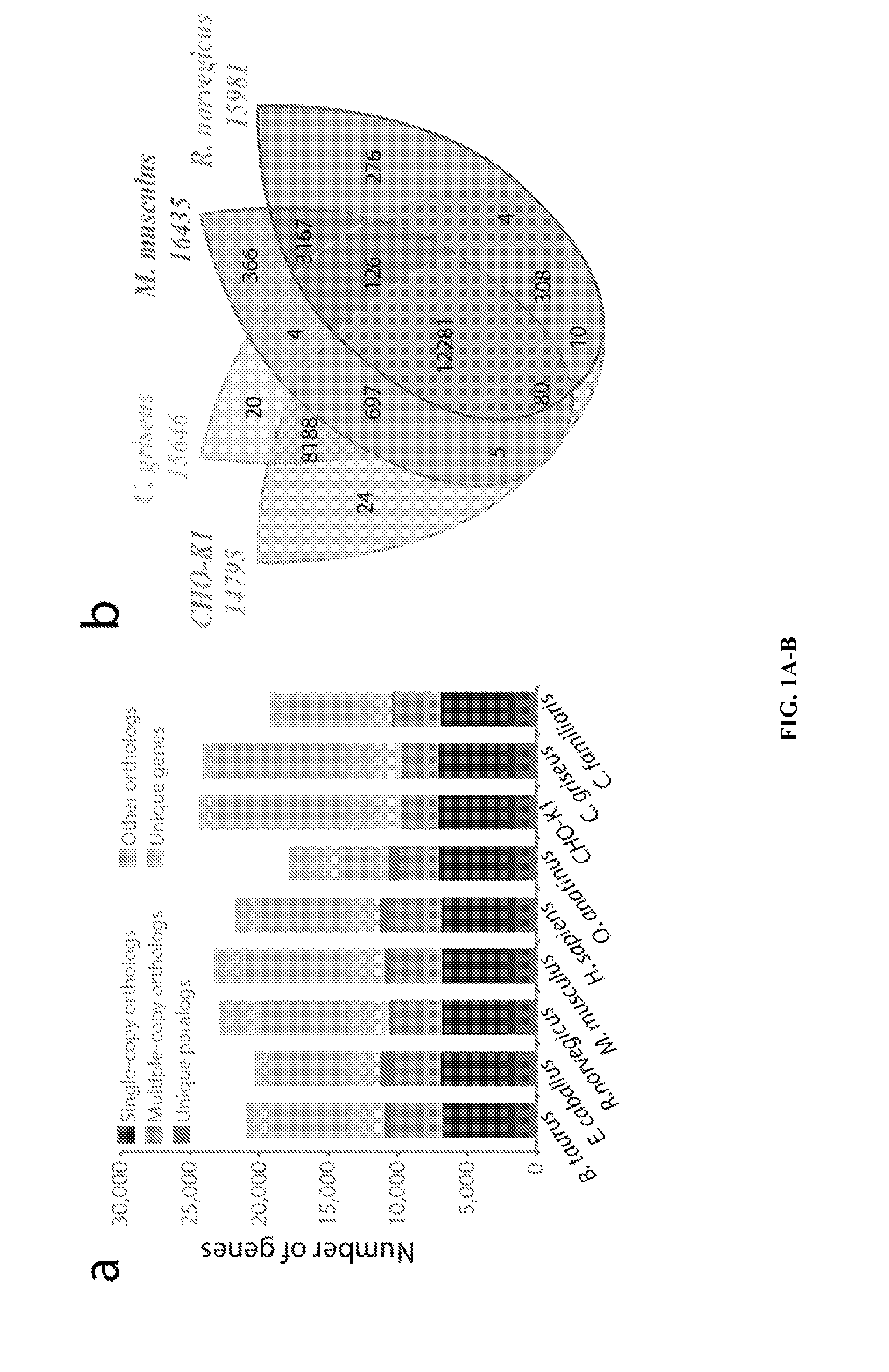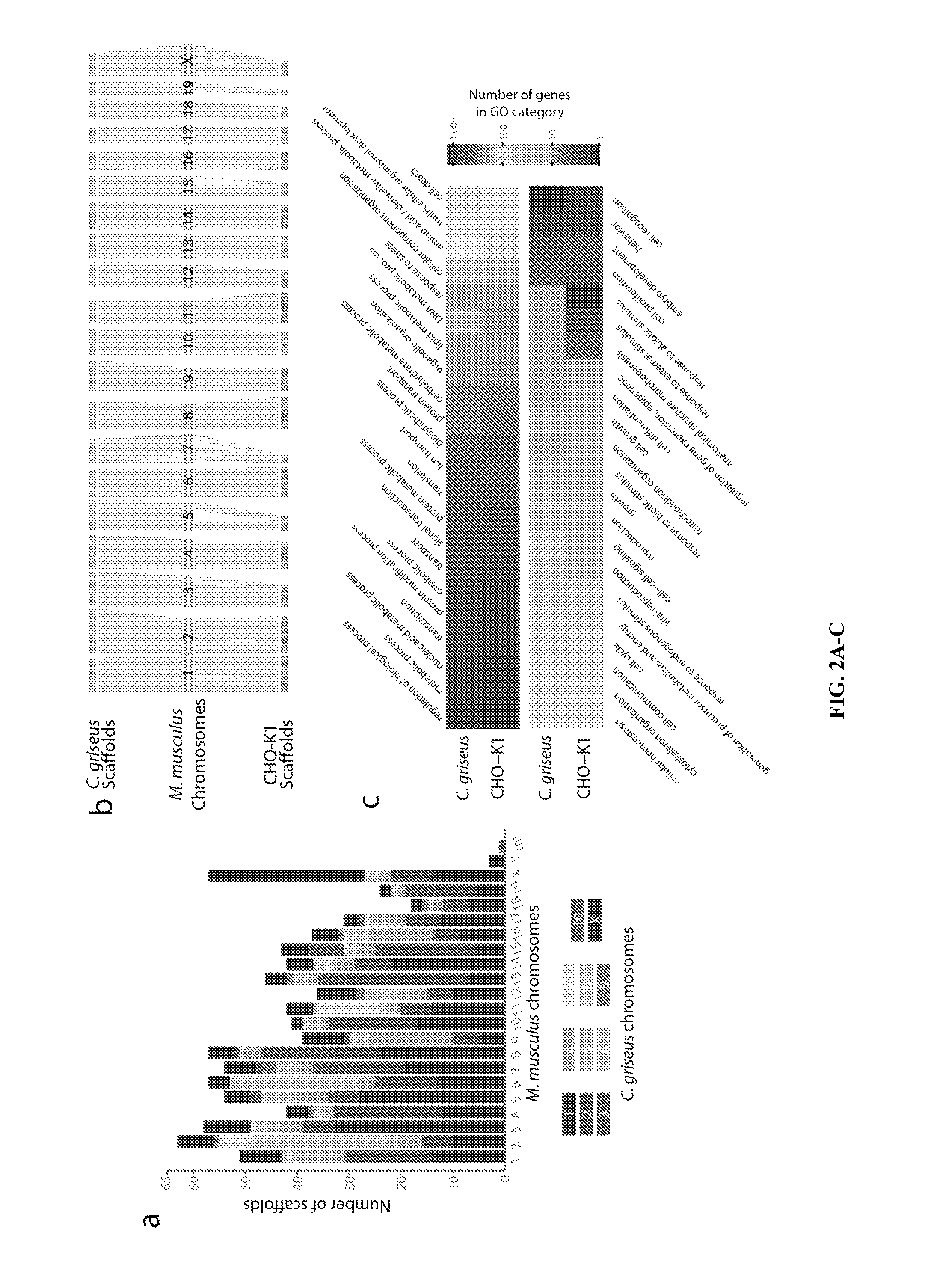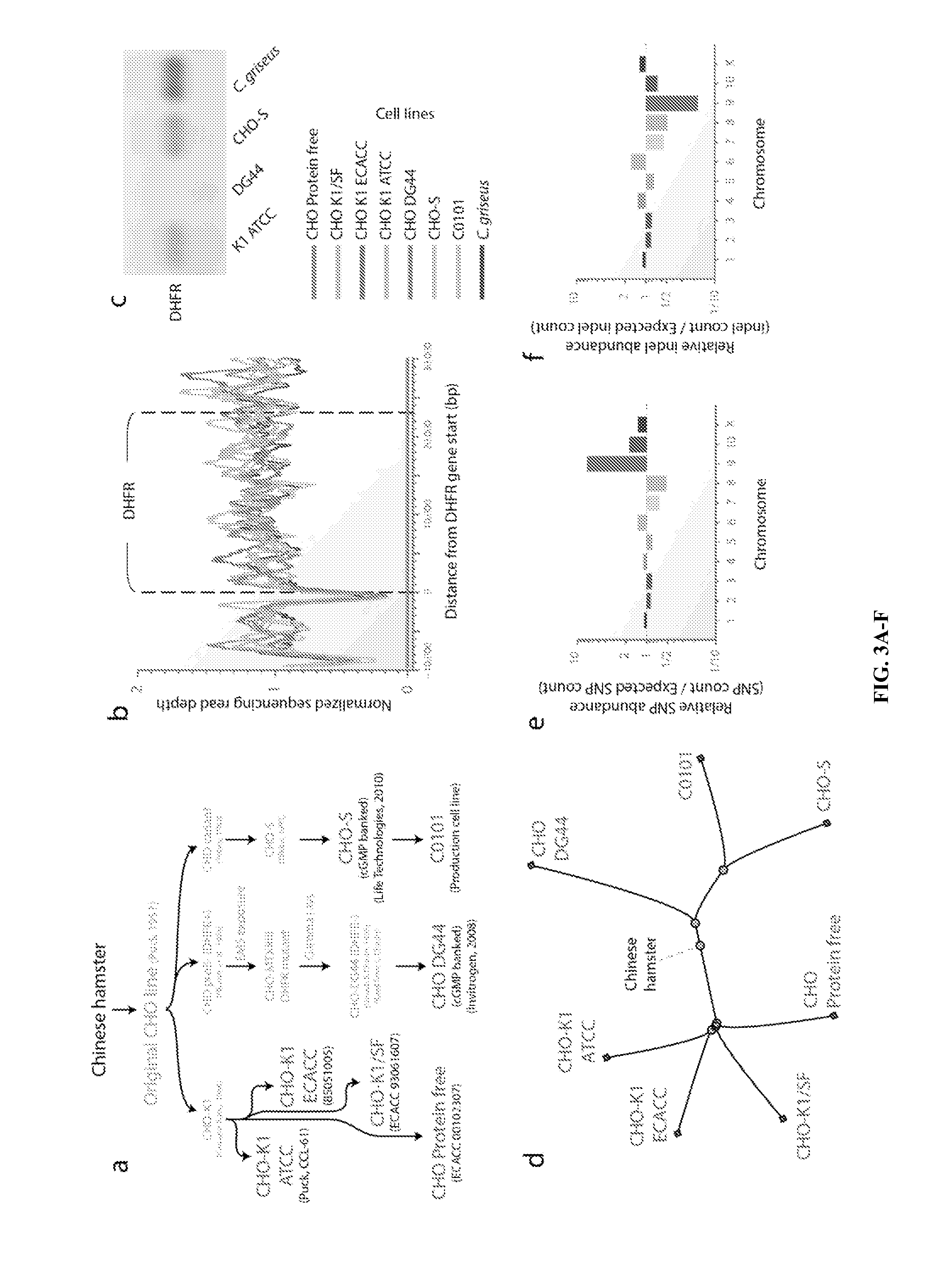Methods for modeling chinese hamster ovary (CHO) cell metabolism
a cho cell and metabolism technology, applied in the field of system biology, can solve the problems of protein malfunction, implicating fatal consequences, and the molecular mechanism by which the cell achieves non-random glycan assembly remains poorly understood, and achieves the effect of minimizing or maximizing the objective function
- Summary
- Abstract
- Description
- Claims
- Application Information
AI Technical Summary
Benefits of technology
Problems solved by technology
Method used
Image
Examples
example 1
Genomic Landscapes of Chinese Hamster Ovary (CHO) Cell Lines as Revealed by the C. griseus Draft Genome
[0119]Chinese hamster ovary (CHO) cells, first isolated in 1957, are the preferred production host for many therapeutic proteins. Although genetic heterogeneity among CHO cell lines has been well documented, a systematic, nucleotide-resolution characterization of their genotypic differences has been stymied by the lack of a unifying genomic resource for CHO cells. A 2.4 Gb draft genome sequence is reported herein of a female Chinese hamster, C. griseus, harboring 24,044 genes. Additionally, the genomes of six CHO cell lines from the CHO-K1, DG44 and CHO-S lineages were resequenced and analyzed. This analysis identified hamster genes missing in different CHO cell lines, and detected >3.7 million SNPs, 551,240 indels and 7,063 copy number variations. Many mutations are located in genes with functions relevant to bioprocessing, such as apoptosis, sugar nucleotide biosynthesis and glyc...
example 2
Metabolic and Glycosylation Model Construction
[0202]A genome-scale constraint-based metabolic model of C. griseus, the Chinese hamster, was created based on the genome sequence and annotation (Example 1) and the human Recon 2 model (Thiele et al. Nature Biotechnology 31(5):419-25 (2013)) followed by manual curation. Reactions were removed from Recon 2 when they were carried out by genes not present in the C. griseus genome. Additional reactions were added when required to run computations using the model. The resulting C. griseus model has been used to create C. griseus derived cell line models by using experimental data collected for these cell lines. Specifically this was done for the cell line CHO-K1 and CHO-S using RNAseq to determine the presence of genes, but could be used to create any C. griseus derived cell line model. These cell line models have been validated using measurements of external metabolites as inputs to constrain the model, and then growth rate predictions were...
example 3
Optimized Recombinant Protein Titers
[0225]The model of Example 2 can be used to identify optimal growth conditions (e.g., optimal growth rate for production) to ensure the highest theoretical conversion of a carbon source to a biological molecule of interest.
[0226]By setting the model to grow at specific growth rates, the theoretical optimal IgG production rate can be determined. Combining this with the growth rate (or doubling time), a chosen length of fermentation, and exponential growth function, the theoretical maximal IgG conversion from a carbon source can be found.
[0227]Over a 168 h fermentation the growth rate of 0.01724 with a theoretical maximal IgG production of 3.192·10−5 mmol / g dw / h can produce much more IgG, than when CHO is growing at its maximal predicted growth rate (FIG. 14).
[0228]Alternatively the model can be used to identify the optimal strain for production of a biological molecule of interest such as IgG. By simulating clones with different growth rates produc...
PUM
| Property | Measurement | Unit |
|---|---|---|
| cell doubling time | aaaaa | aaaaa |
| cell doubling time | aaaaa | aaaaa |
| mass | aaaaa | aaaaa |
Abstract
Description
Claims
Application Information
 Login to View More
Login to View More - R&D
- Intellectual Property
- Life Sciences
- Materials
- Tech Scout
- Unparalleled Data Quality
- Higher Quality Content
- 60% Fewer Hallucinations
Browse by: Latest US Patents, China's latest patents, Technical Efficacy Thesaurus, Application Domain, Technology Topic, Popular Technical Reports.
© 2025 PatSnap. All rights reserved.Legal|Privacy policy|Modern Slavery Act Transparency Statement|Sitemap|About US| Contact US: help@patsnap.com



